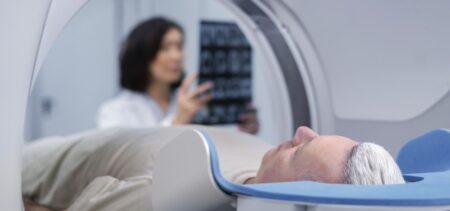In March 2016 the providers of telehealth medicine from Florida received good news. Florida lawmakers passed a bill that focuses on commercial insurance coverage. The key outcome is that telehealth providers will be able to enhance their offerings, as well as their services’ quality.
Delivering health-related services and discussing health-related matters via any telecommunication technologies qualifies as telehealth – an expansion of telemedicine (which predominantly focuses on the curative processes) into the preventative and curative medical areas. Telehealth has clinical uses, as well as non-clinical (educative, administrative, data management or remote operations regarding the patient movement or admission, among others).
While technology is on the raise in what the number and type of devices is concerned, as well as its public adoption and capabilities, healthcare benefits from its digital potential in reaching the patients, communicating with them, diagnosis and treatment – all in a salutary manner.
Main telehealth benefits
- The main benefit triggered by telehealth deployment is, as proven by research, financial. According to GBI research, the recently announced savings resulting from widespread telehealth adoption would actually surpass $6 billion;
- Another raw benefit would consist of widespread improved access to medical services, especially for rural or remote areas patients, making specialist healthcare services feasible for these categories, regardless of their geographical location;
- With significant growth rates projected for the following period up to 2018, telehealth also comprises other benefits, such as representing an added source of revenue, as well as strategic advantages when it comes to distributing the working hours between appointments and cases with different degrees of difficulty;
- A better time allotment directly serves in compensating for the predicted physicians’ shortage by 2025 (more than 130600 thousands practitioners and specialists less than needed). The resurgence of interest in telemedicine comes at the right time, aiming to ensure remote healthcare interventions in the less severe cases and thus trim the numbers of patients to be diagnosed by face-to-face real life meeting, or even admitted into the hospital. By handling the simpler cases via remote interventions, the physicians should find extra time to focus on the most difficult cases. Telehealth’s preventative and curative functions are also welcomed in the current and future situation;
- Medical insurance professionals also look forward for easing the costs for medical interventions via the preventive, monitoring and selective process enabled by telehealth systems;
- Another listed benefit would be quicker care, since the patient is reachable instantly via his computer terminal and may receive device on how to proceed from that very moment on, unlike the situation where the patient has to travel to the medical facility and wait in line for the first medical opinion on his or her medical problem.
Telehealth issues and challenges
The more skeptical voices on telehealth comment on some of the same facts as the telehealth supporters. If the supporters quote the fact that telemedicine has been around for 20 years as a motivational factor (time to gain experience for the involved professionals, time to develop certain procedures that now benefit from upgraded technology and so on), the other party wonders why has telemedicine failed to become more popular in 20 years.
- The medical sector segmentation affects this technology as well, and this is just one of the issues that hinder the doctor-patient digitally mediated relationship. Forbes engaged into an interesting inquiry on how telemedicine operates in siloes, continuing an unproductive trend from the real-life face-to-face healthcare. By providing specific examples, their article paints a telehealth image full of different providers, clashing services and technologies and in summary, totally contradictory to the “connected care” concept;
- Unlike the medical services, the infrastructure is connected by default, and in this inherent connectivity lies yet another telehealth challenge: the data privacy is on continuous alert, due to cyber-security threats and the possible data breaches, fueled by the high prices medical data have on the dark market. The data protection levels depend on how much is invested in cyber-protective measures, on updates and specific protocols;
- Lack of IT literacy or expertise would be another challenge faced by telehealth. Since this system totally depends on digitized remote connectivity, it is crucial for both the practitioner and the patient to be able to properly use their terminals in order to fully communicate – visuals included;
- Faulty infrastructure could lead to problems in communication and failed mediated meetings – basically making the doctor-patient communication impossible in all its aspects;
As we may see, these last issues are rather specific to all types of communications mediated by computers and other digital terminals. It just happens that telehealth involves sensitive data, possible emergency situations and the utmost need for accurate communication – all being elements that underline how crucial it is to overcome all possible challenges, in order for this process to be able to go on smoothly and safely.
Other key adoption issues would be:
- Resource capacity and availability;
- Technical difficulties in installing all necessary equipment at both ends;
- Lack of expanded Medicaid and Medicare reimbursement models for providing these specific services;
- Lack of initial funding for implementing new access points;
- Lack of “standardized program guidelines, change management and training” procedures.
In view of this brief summary on telehealth’s current state, this modern medical approach still has a few important steps to go until it reaches its mainstream widespread phase.




























